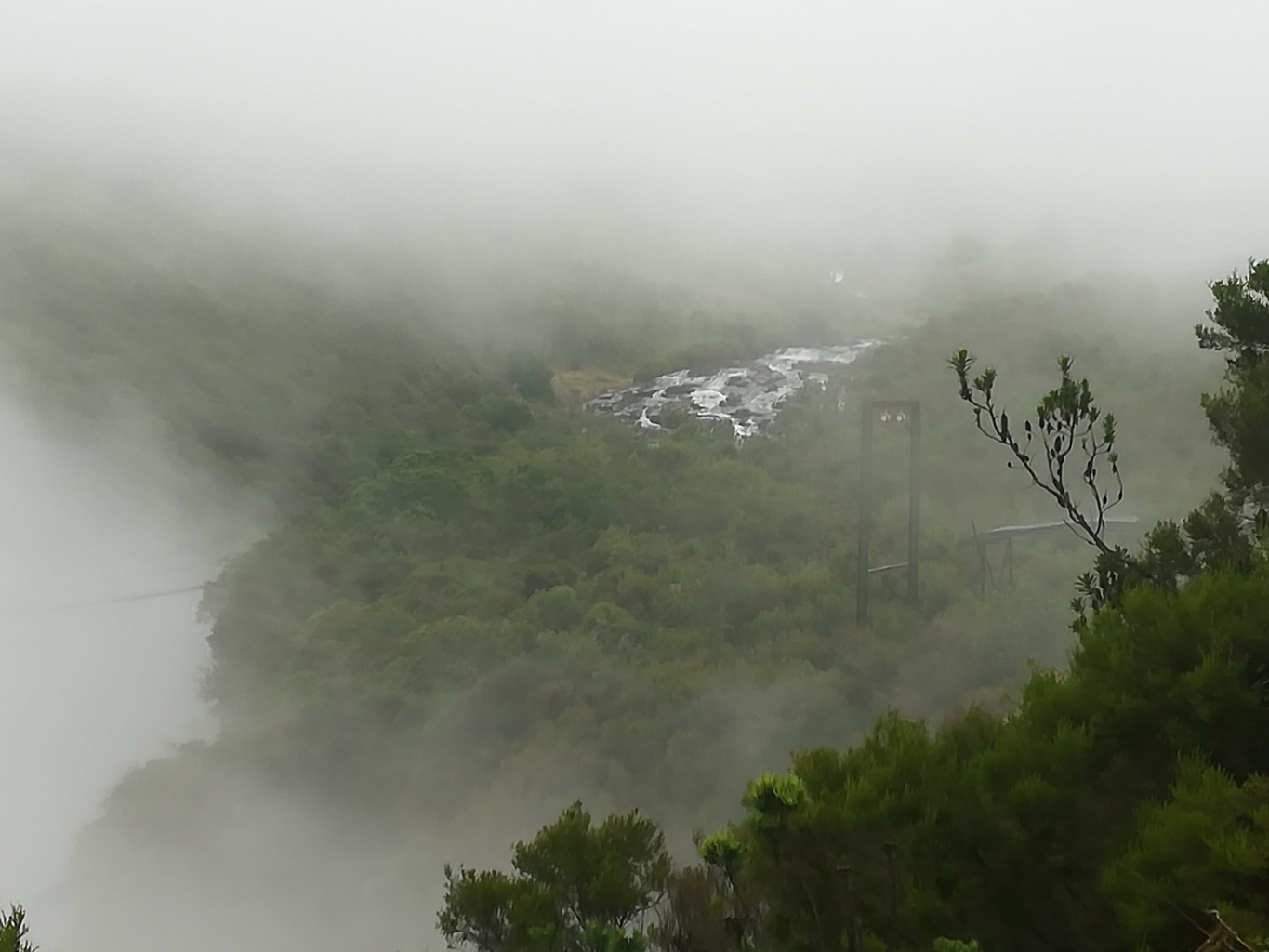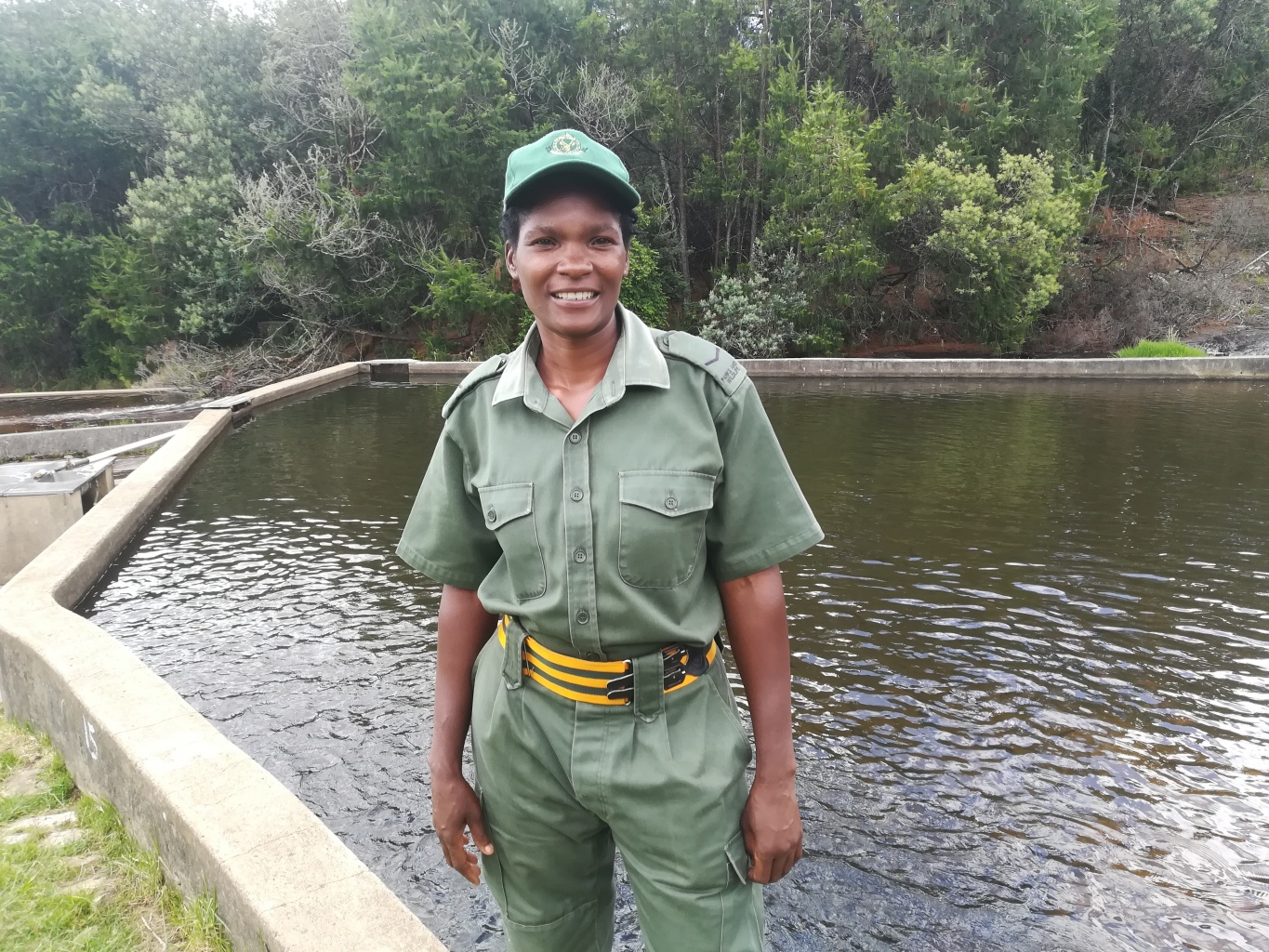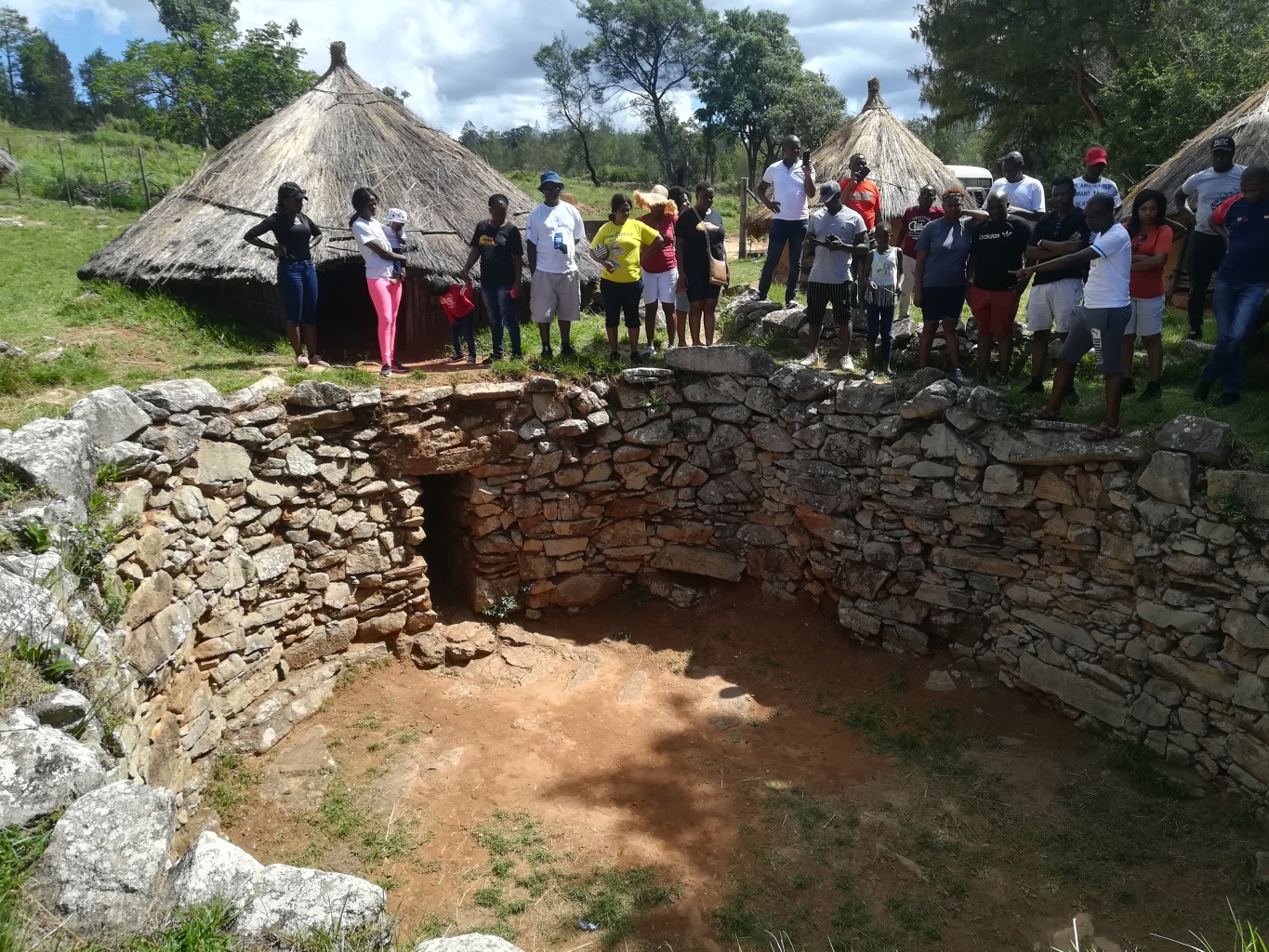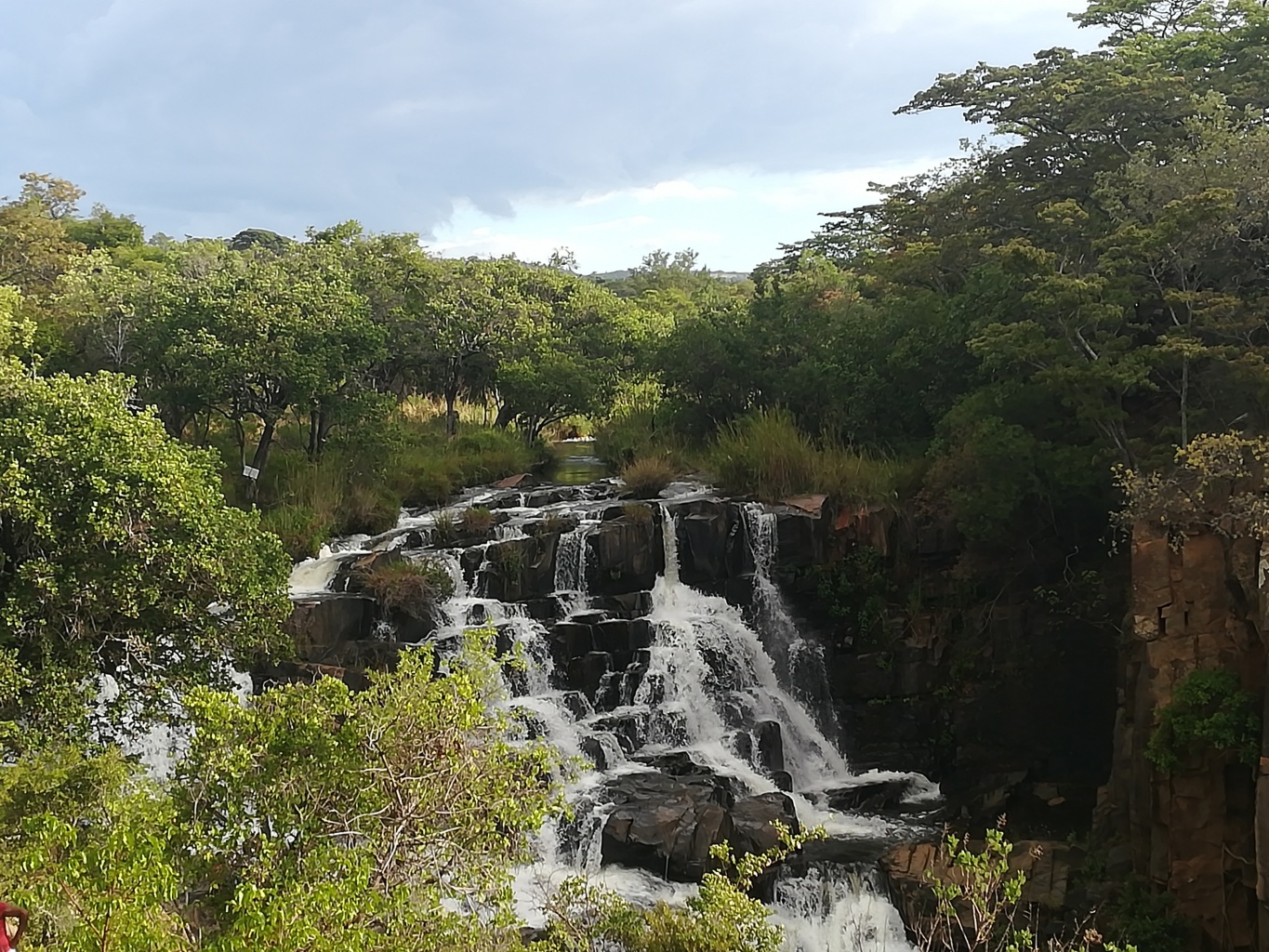On Friday the 6th of December, I joined a group of Zimbabweans who embarked on a trip to the mountainous town of Nyanga, which is 268 kilometres from the capital, Harare and lies on the eastern border with Mozambique.
The trip was organised by a local tour operator, Dynaly Travel and Tours, which marketed it as a couples retreat, but singles (like me) were allowed to travel with the group.
We were told to be at Jameson Hotel, along Samora Machel Avenue, in Harare at 6:45 in the morning and depart for Nyanga at 7:30 am.
However, we left just before 9am as we had to wait for two couples (all related) who ran late.
They alighted from what appeared to be a taxi, much to the annoyance of the impatient in our midst.
They, however, apologised for the late coming.
One of the ladies who came in late had a cake and told us that it was her birthday.
With that, those who had become restive while waiting for the four to arrive, somewhat warmed up to the lady, who later became an entertainer throughout the trip, with her alcohol induced-jokes.
Shortly before departure, the organiser of the trip, Daniel Madamombe, who was affectionately known as ‘Coach D’, asked one of us to say a prayer for protection on the road.
One lady volunteered and the bus was set in motion as soon as she concluded her short prayer.
The road from Harare to Rusape, about 168km, east of Harare, was in good condition as it was recently resurfaced. There are only two toll gates between Harare and Rusape.

We had a stopover in Rusape for refreshments and ‘Coach D’ told us to stock up some food and drinks as Nyanga didn’t have big supermarkets as was the case in other towns.
We took about 40 minutes in this town before we proceeded with the journey. Rusape and Nyanga are not far apart. The distance between the towns is 100km and the road is generally in good state and areas that were in bad state are currently being resurfaced.
I asked ‘Coach D’ when the resurfacing started and he said, last year.
Zimbabwe is generally a very green country, but this became more pronounced as we drew closer to Nyanga.
The panorama of mountains, an array of pine trees and expansive grassy plains, leaves you in awe as you begin to wonder what more Nyanga will have to offer.
Arriving in Nyanga
We arrived in Nyanga shortly after 3pm and before we checked in at our hotel, we had to visit Mutarazi Falls. The terrain makes it difficult to drive with a trailer, so it was decided that we leave it at Montclair Hotel and Casino, which is about 10 km from the town of Nyanga.
We were told to expect two things: if ‘lucky’, find the falls visible or if ‘unlucky’ the falls will be not visible due to mist.
It had rained in the morning, the day we arrived in Nyanga, so some parts of the town were misty.
At some point we drove through misty areas and most people became worried that we might not be able to view the falls as visibility was very low.

Joy erupted as the mist started clearing as we approached the entrance to Mutarazi Falls.
The driver joked that he had supernatural powers and he had caused the mist to disappear.
“I have powers, the mist disappeared as we got closer and closer to the falls,” he joked much to our pleasure.
The tour operator paid the gate fee for us and we started a short walk to the edge of the escarpment to view the falls and possibly Honde Valley.
We were all filled with anticipation that we would find the falls visible to the eye as it was sunny at the gate.
However, as we approached the falls it became evident that we would not be in a position to see anything as the gorge was filled by a thick mist.
All we could hear was the thundering sound of the water fall.
We stood there in disbelief, even the driver that spoke much about his ‘supernatural powers’, became a mute all of a sudden as people took a jibe at him.
We started taking photos of the mist covered gorge and after some time the mist partially drifted away, allowing us to see water flowing through the cracked rocks on the right side of the gorge.
The brave ones who wanted to go for the Skyline and Zipline were disappointed as the mist meant their plans for the hair raising activities were doomed.

Image credit: Dynaly Travel & Tours
The bulk of the people we travelled with were not willing to go on the Mutarazi Skyline or Zipline, not out of fear, but the cost, which they say was too inhibitive.
So we departed from the Mutarazi Falls to our hotel, dejected as the mist had robbed us of a lifetime opportunity to see the longest falls in Zimbabwe at 762m and the second highest in Africa.
We found the town sunny, unlike the angry weather at Mutarazi Falls.
Dear reader, I will not bother you with details on our lodgings.
Second day: climbing Mt Nyangani, more falls, albeit not high
The second day was packed with lots of activities and we were told to take our breakfast at 7am and leave for Mt Nyangani at 8am. Having been disappointed with the mist that enveloped Mutarazi Falls, we were all praying that we won’t find the mountain misty as well as you are not allowed to hike the mountain when its misty.
When we got to the entrance of the Nyanga National Park, a guide was assigned to us, as the management of the national parks are now strict on the safety of the hikers. I will come back to this later.
The guide, Artwell Thanda, took us through an induction as we make our way to the mountain.
He said the name Nyanga was derived from animal horns (runyanga, which is the traditional word for horn and the plural being nyanga).
Thanda said the mountain is sacred as it is believed to be home to supreme spirits and warned us not to point at the mountain, not to pick stones or tell someone what you would have seen, should you encounter something unusual.
We were also told not to urinate in the mountain as the rivers in the area start from the mountain.
Several cases of disappearances were reported in the mountain and the most recent one occurred in 2013, hence the need for a guide.
As we continued with the drive to the mountain, the tour operator decided to take a detour to Nyamuziwa Falls. This was initially not part of the itinerary. Waterfalls are a common feature in Nyanga and the bulk of them were formed as a result of dolerite intrusion. In the case of Nyamuziwa Falls, the harder rocks were said to have formed a resistant barrier across the stream, resulting in the falls.

We took more than 30 minutes taking photos. We then proceeded to Mt Nyangani and we were treated to majestic scenic views, including umbrella shaped trees.
When we got to the mountain foot, we found another group of local tourists, albeit small compared to ours, preparing to hike the mountain.

The guide told us that the mountain was 2,593 metres (8508 feet) above sea level, making it the highest peak in Zimbabwe.
To reach the mountain top or beacon at the summit and return, one needs three hours.
However, due to time constraints we only hiked up to the second level of the seven to get to the mountain top.
The mountain is mostly covered by low shrubby vegetation.
It took us almost an hour to get to the second stage, where we drank fresh water flowing down from the mountain top.
It was very cold and tasty. Others washed their faces with the water as they believed that one can become fortunate when they use the water from the mountain to wash themselves.
From that stage, one could not help it, but appreciate the scenic views, which makes Nyanga’s beauty too attractive to resist.

After the photoshoot, water drinking and the bathe for some, we began the descend.
Our next stop was a Trout Hatchery Farm operated by the ZimParks.
Trout is the fish of Nyanga as it thrives in cold weather typical of this mountainous area.
A ZimParks ranger, Joice Muradzi said trout was the best fish one could eat in Zimbabwe and they were supplying it to the local hotels for ZW$160 per kg at the time.

From there we went to the pit-structures, which are believed to be the best depiction of the region’s heritage.
The structures that we saw are not original, but were a re-construction based on archeological evidence. The pit housed small livestock such as goats.
The animals were kept in the pit by wooden poles, let into the tunnel from the floor of the main hut, making access to be guided at night.
The last pit-structures were said to have been built towards the end of the 19th Century.

The owner and his family lived in the huts that were an artificial earthen platform built out from the slope.
From the pit-structures we went for lunch.
After lunch we went to Nyangombe Falls, located on the western tip of the Nyanga National Park.
On our way to the falls we drove through the national park, again where we had an opportunity to see game such as wildebeest, kudu, reedbuck and zebras.
Nyanga is not a place for big game, but a few lions were said to have been spotted in the area, probably coming from Chipinge or Mozambique.
However, leopards are said to be a rare sight as they usually like to roam around at night.
As we got closer to Nyangombe Falls, we were greeted by a thunderous noise of the falling water.
Just like Nyamuziwa, Nyangombe Falls were also established after harder rocks formed a resistant barrier across the stream.
The rocks at these falls are slippery and one should exercise caution.

We took more than an hour at these falls, before we concluded the day swimming at Nyangombe ‘natural’ pool, which is along the Nyangombe River.
The river cascades down the rocks into the ‘natural’ pool and a sandy area called Brighton Beach.
The cold water in the pool was very clear and we were told that it was bilharzia free.
The area also had a picnic braai area, toilets and changing rooms.
![IMG-20191208-WA0028[1].jpg IMG-20191208-WA0028[1].jpg](/upload/medialibrary/726/726b0f76d0057959ac56e185e212c1e5.jpg)
On the third day, we only visited the Rhodes Nyanga Museum, before we departed for Harare.
The museum, which is housed in Cecil John Rhodes’ stables and next to the Rhodes Nyanga Hotel, is a treasure trove of information on Zimbabwe’s early history.
It is managed and run by community members and a Zimbabwe National Trust asset.
Other places of interest in the Nyanga National Park that we didn’t visit, include Pungwe Gorge and Falls, Nyangwe and Chawomera Forts.


